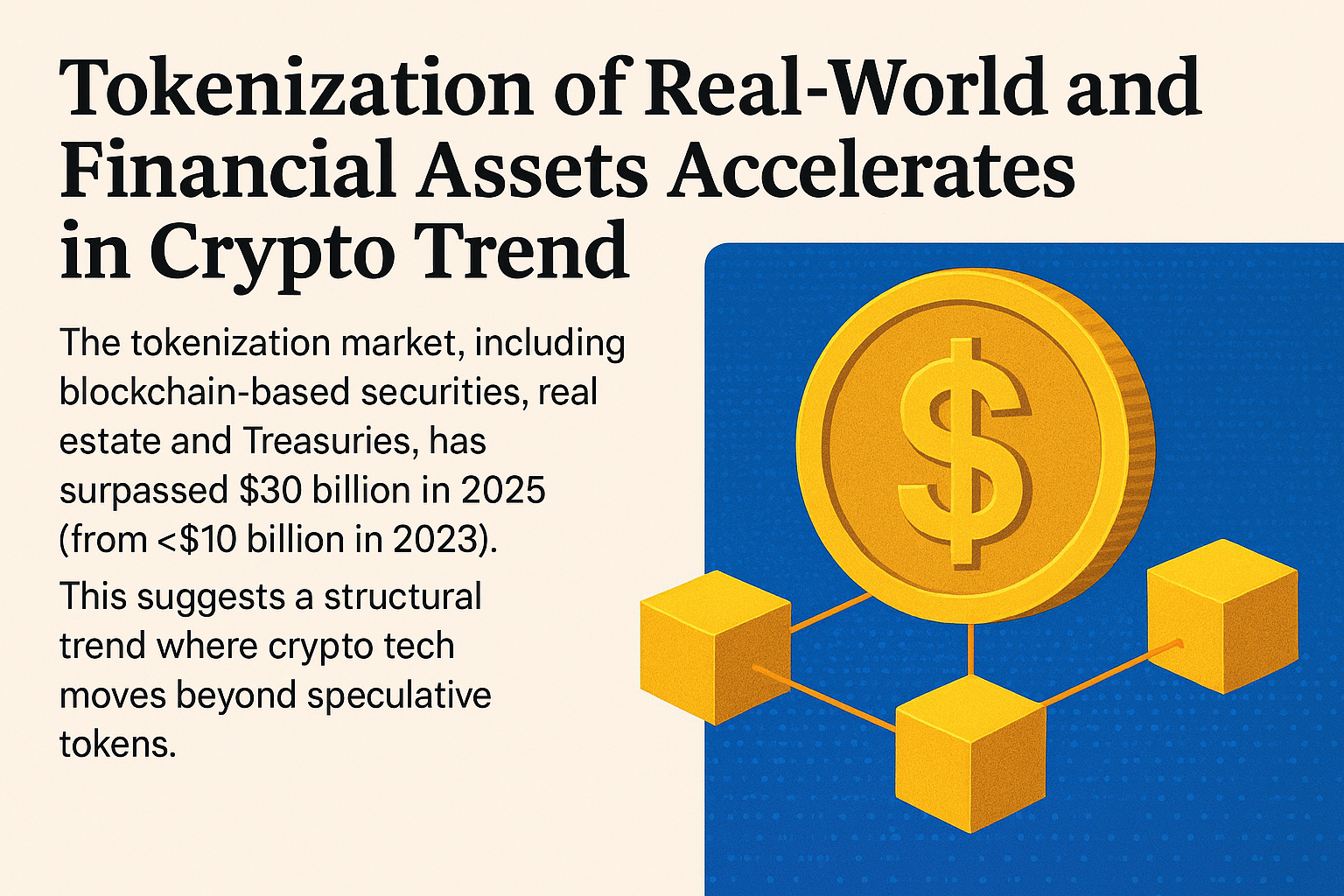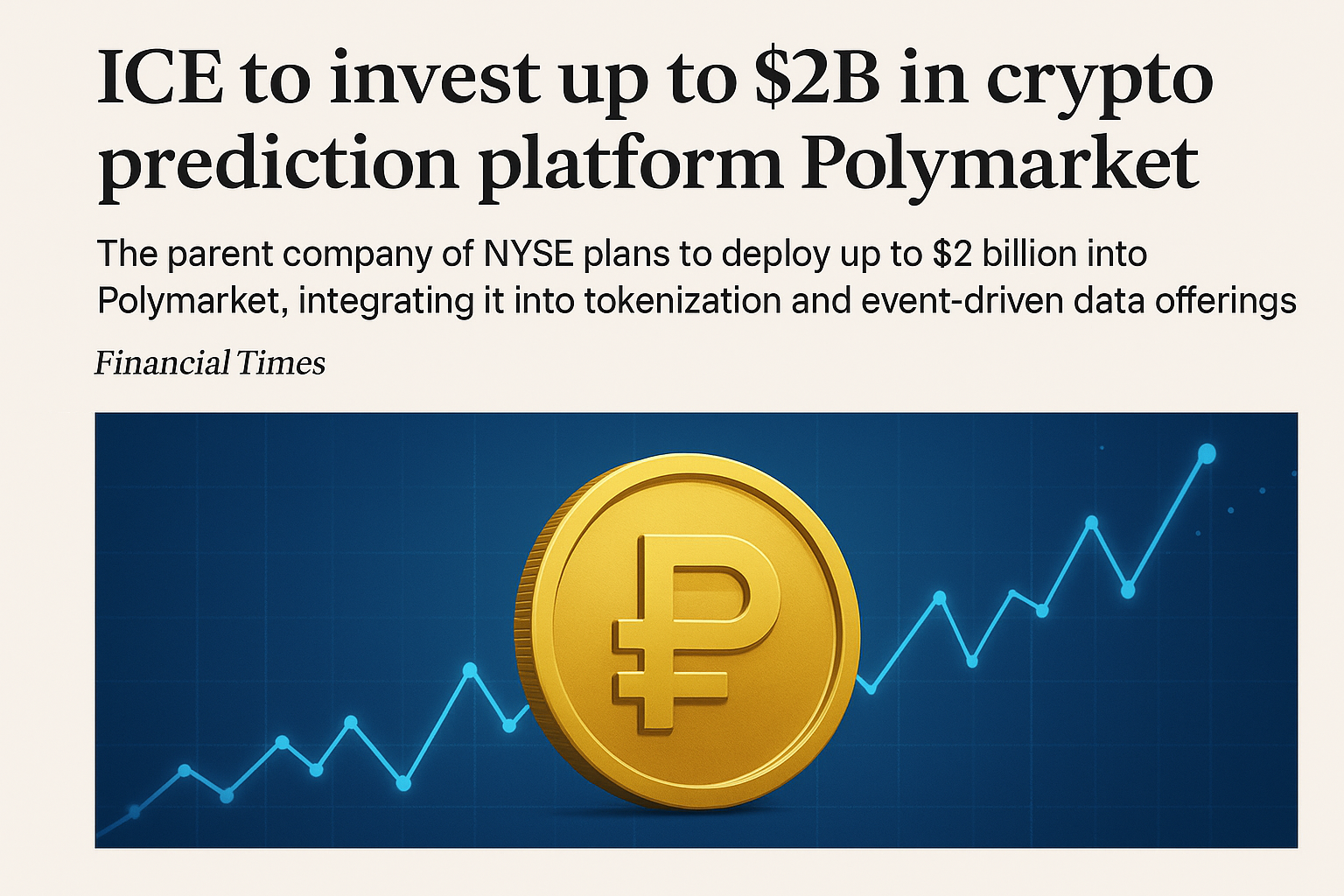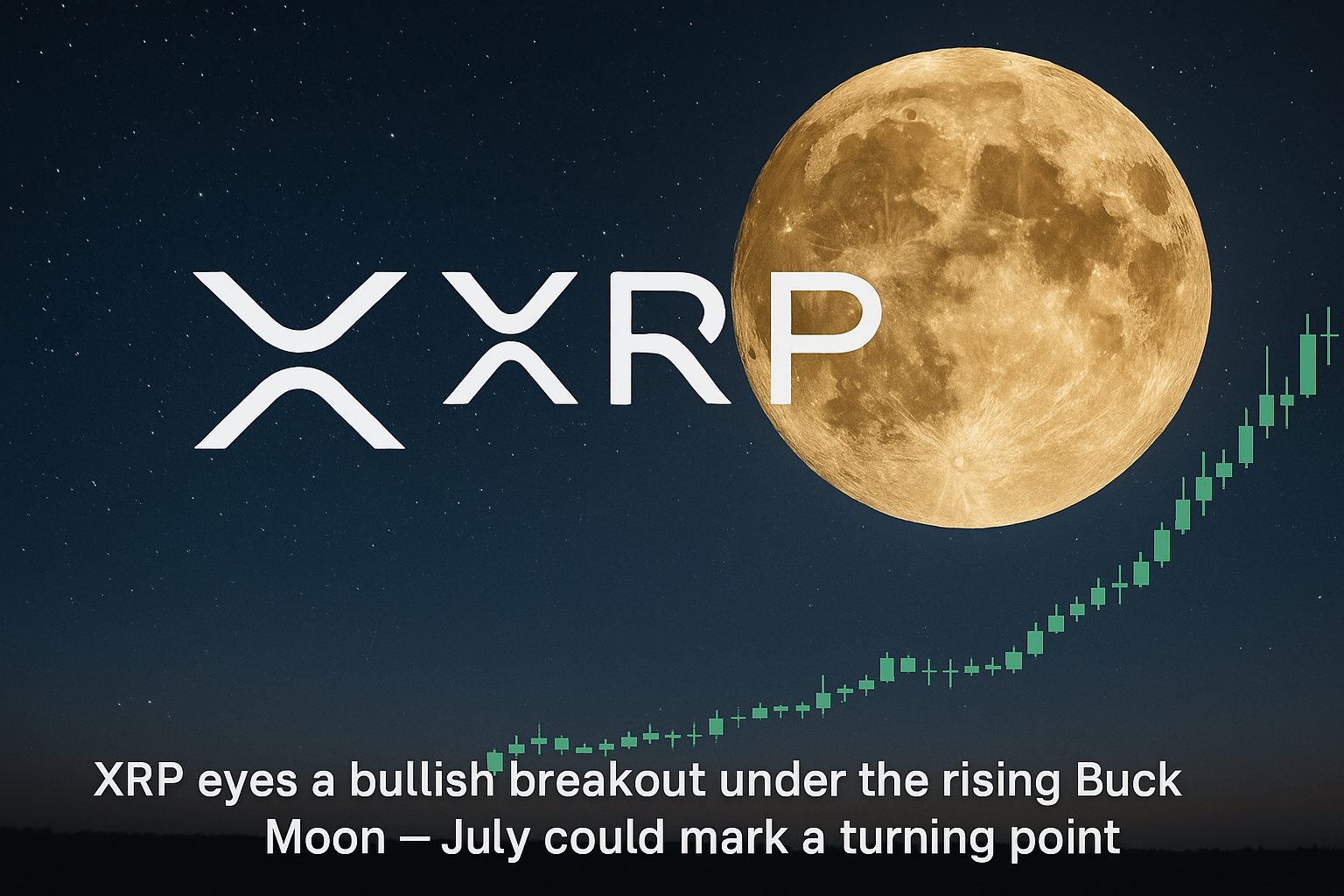The year 2025 marks a pivotal moment in the evolution of blockchain technology and its integration into traditional finance. What once was an industry driven largely by speculative trading and volatile cryptocurrencies has now begun to shift toward real-world utility. Tokenization — the process of converting ownership rights of assets into digital tokens on a blockchain — is leading this transformation, and its growth has been nothing short of explosive.
According to recent market data, the total value of tokenized assets has surpassed $30 billion in 2025, up from less than $10 billion in 2023. This rapid expansion reflects a deep structural trend: blockchain is no longer merely a playground for crypto traders, but an increasingly trusted infrastructure for the global financial system.
From Speculation to Structure
Tokenization first gained attention in the crypto world as a way to represent digital art (NFTs) or project tokens. But the real momentum came when institutions began experimenting with tokenized Treasuries, real estate, and private credit instruments. Instead of focusing on hype, financial players started focusing on efficiency, liquidity, and transparency — the real strengths of blockchain.
For example, a tokenized U.S. Treasury can be traded 24/7 on blockchain platforms, eliminating the delays and intermediaries that typically slow down traditional markets. Similarly, fractionalized real estate tokens allow investors from across the world to gain exposure to property markets without the barriers of large capital requirements or cumbersome paperwork.
Institutional Adoption Speeds Up
The institutional embrace of tokenization is one of the most important drivers of this trend. Major asset managers, banks, and fintech firms are deploying blockchain-based platforms to issue and trade real-world assets (RWAs). BlackRock, JPMorgan, and Goldman Sachs have all piloted or launched tokenization projects that focus on funds, securities, and private credit.
This isn’t just about modernization — it’s about unlocking trillions in illiquid assets. Estimates suggest that up to $16 trillion in assets could be tokenized by 2030. These range from corporate bonds and money-market funds to luxury goods and even art. Each token represents a small, transferable share in something tangible, creating a bridge between traditional markets and the decentralized future.
Why Tokenization Matters
Tokenization improves financial inclusion, liquidity, and accessibility. It allows global participation in asset classes that were previously limited to a few. For small investors, this means the ability to own fractions of blue-chip assets like office buildings or Treasury bills. For institutions, it means operational efficiency, instant settlement, and reduced costs.
Moreover, blockchain’s transparency and programmability allow for real-time auditing, automated compliance, and secure record-keeping. In a world where trust in financial systems is constantly tested, tokenization provides an auditable, immutable layer that redefines confidence in asset ownership.
Challenges Ahead
Despite the optimism, tokenization still faces regulatory and technological hurdles. Jurisdictions differ on how tokenized assets should be classified — as securities, commodities, or something new entirely. Infrastructure scalability and interoperability between blockchains remain active areas of development. And for widespread adoption, user-friendly interfaces and robust custodial solutions are crucial.
The Bigger Picture
The acceleration of tokenization signals something profound: the fusion of crypto innovation with traditional finance. As markets mature, speculative volatility is giving way to real-world applications that promise to make financial systems more open, efficient, and global.
In 2025, the line between “crypto” and “finance” has begun to blur. Tokenization is not just another crypto trend — it’s the next frontier in the digitization of value itself.




